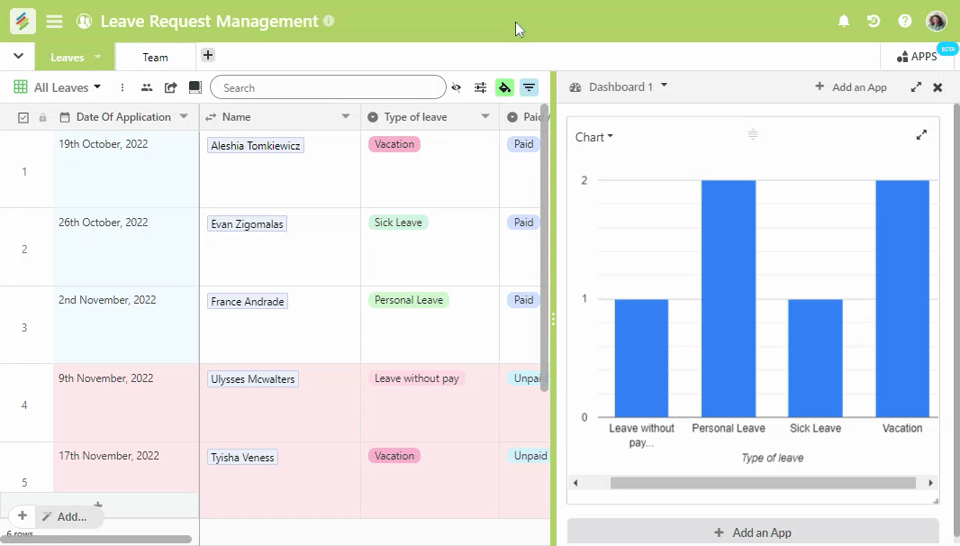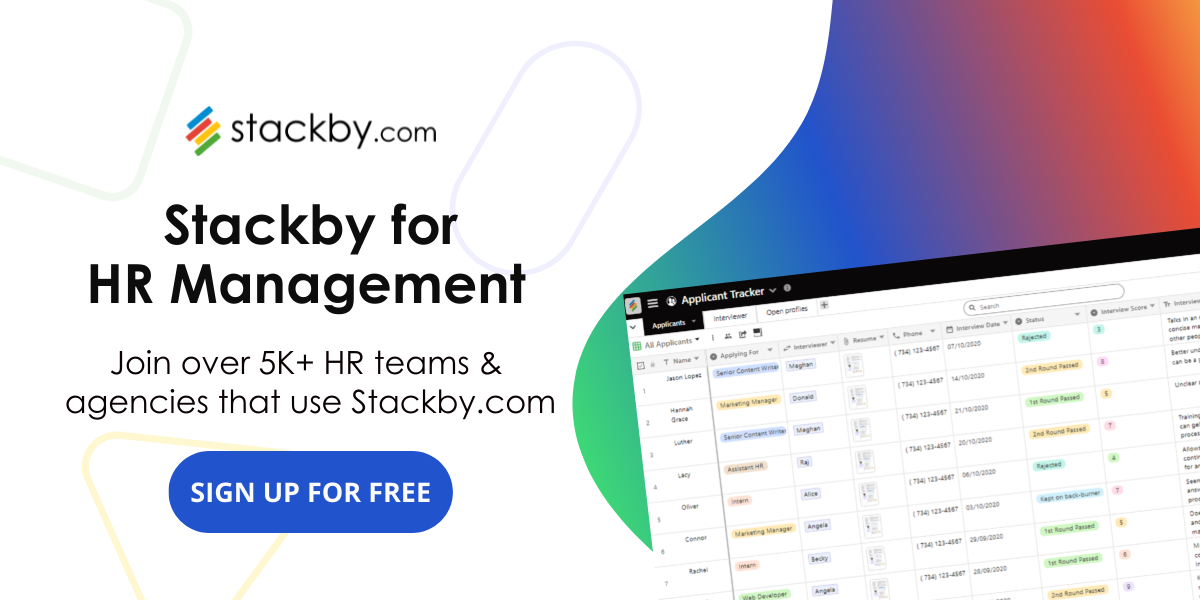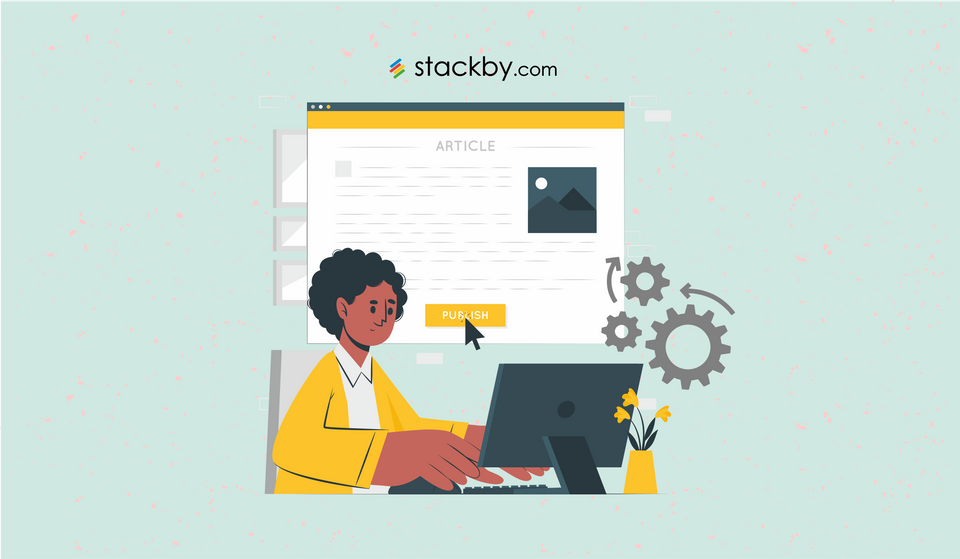15 Best HR Software for HR managers & Internal HR teams [2026]
If you're an HR manager, this is the only HR software blog you'll ever need to read. Learn about top 15 HR management software to manage people & workflows.
![15 Best HR Software for HR managers & Internal HR teams [2026]](/blog/content/images/size/w1200/2023/04/HR-Software-Why-You-Might-Need-It-in-2023.png)
As the world evolves and adapts to new technologies, companies must do the same to remain competitive. One area that has undergone significant changes in recent years is human resource management. HR software has become an essential tool for many companies to streamline HR operations, improve employee engagement and increase productivity.
As an HR manager at a fast-growing startup, you currently use manual record-keeping methods such as spreadsheets, Excel, and forms to manage day-to-day HR tasks. However, you have identified the need to upgrade to HR software to improve your processes.
What helps you to make the best choice of the best HR software for your needs?
As we move to a more technologically advanced environment, the use of HR software in organizations can lead to the roles of managers and employees, making them more strategic and engaged. By reducing paperwork and streamlining processes, HR software allows employees to focus on more complex tasks. This leads to better planning, strategic decision-making, and increased employee job satisfaction.
To manage core HR functions, you need to implement appropriate systems to take care of all processes, reduce manual work to zero and give you time to focus on more important tasks.
Importance of HR software: Benefits You Can’t Ignore
HR software tools can offer many benefits to organizations and HR professionals. Some of the ways HR software tools can help include:
1. Streamlining HR processes: HR software can automate various HR processes such as recruiting, onboarding, performance management, and employee engagement, saving time and increasing efficiency.
2. Improving Data Accuracy: By using HR software tools to record and manage employee data, organizations can reduce errors and improve data accuracy.
3. Facilitating Communication: HR software can facilitate communication between HR professionals and employees by providing a platform for employees to access and update their personal information, and HR professionals can send messages to the entire company.
4. Increasing Compliance: HR software can help organizations ensure compliance with laws and regulations such as taxes and labor laws.
5. Analytics Enhancement: HR software can provide insight into employee data, allowing HR professionals to identify trends and make informed decisions.
6. Improving the Employee Experience: HR software can provide self-service capabilities for employees to complete tasks such as requesting time off or updating personal information, improving the overall employee experience.
To manage core HR functions, you need to put proper systems in place, such as complete HR software like Stackby that takes care of all processes, reducing manual work to zero and giving you time to focus on more important tasks.
HR Software Key Features
- Applicant Tracking System
- Induction tools
- Performance management
- Pay and benefits management
- Time and attendance monitoring
- HR analytics and reporting
- Monitoring planning
- Competence management and career development
- Employee engagement and feedback
Integrated and Standalone HR Systems
Choosing between integrated and standalone systems is an important part of choosing the right HR software. A stand-alone system is often referred to as stand-alone software. These are more specific solutions that often focus on a single function.
The advantage of the segregated system was that it offered specialized solutions for specific personnel problems. You will enjoy a professional system that would be easy to use and easy to use. Recently, integrated HR systems have become much more popular. These are solutions that include many additional features, allowing organizations to use a single software to solve HR problems.
The advantage is that you only have to learn to use one system, which makes it easy for HR professionals to stay on top of things. But you also add complexity that is worth considering.
"Why do you need HR software?"
"What is the use of HR software?''
''Should companies consider adding technology to HR functions?''
To answer this question, you need to understand the current challenges that HR teams will face in the future. One of the biggest concerns facing HR professionals in today's workplace:
Talent Acquisition - Finding, screening, and onboarding the right candidate can take time. LinkedIn Data shows that hiring takes about 47 days, compared to just 25 days in 2014. Longer working hours can increase the pressure on the existing workforce.
Talent Retention - Many organizations are dealing with high turnover because people aren't sticking around these days. Loyalty can be hard to achieve, and HR professionals must find ways to maintain morale and retain top talent.
Remote work - While the days of pandemic shutdowns are more or less a thing of the past, remote work is here to stay. Research has shown that employees want more flexibility and often even want to work remotely.
Corporate responsibility - Customers and employees care about corporate responsibility and ethics. People are looking for sustainable organizations that care about their communities. HR professionals are often at the forefront of demonstrating corporate responsibility, which increases the pressure on them.
These challenges mean that HR professionals must ensure talent development and employee satisfaction. To do this, they don't want to sit and waste a lot of time on manual tasks like entering employee information into the system. But just because a task is mundane or time-consuming doesn't necessarily make it unimportant. For example, salary issues can damage employee morale and lead to talent retention. HR technology plays a critical role in enabling HR professionals to meet these challenges without losing sight of important tasks.
Make sure the HR software you choose meets your goals and challenges.
Now let's review one by one the best HR software that best suits your needs with its basic features.
1. Stackby

As companies grow, HR processes can become increasingly complex and time-consuming. From employee information management to time tracking and performance management, HR professionals need tools to streamline workflows and improve efficiency. This is where HR management software comes in, and Stackby is a cloud-based HR management software that offers a variety of features to help organizations manage their HR processes.
Companies can simplify HR workflows and centralize data by using dedicated employee database software built for team efficiency.
What is Stackby? How does it help?
Stackby is a cloud-based software that offers various tools for HR management. It aims to simplify HR processes and improve the employee experience by offering a range of features to help HR professionals manage their workflow more efficiently. Stackby offers a spreadsheet style interface with customizable database to manage your different HR workflows, easy to use tracking system, automated input processes via forms, employee self-service capabilities, performance management & feedback tracker, time and attendance tracking, compliance tools, and reporting and analytics capabilities.
Some of Stackby's features & use-cases include:
- Recruiting and Applicant Tracking: Stackby offers a customizable job board and applicant tracking system that allows HR professionals to manage jobs and applications in one place.
- Onboarding and Employee Self-service: Stackby provides automated onboarding processes and self-service capabilities for employees to manage their personal information, reducing the workload of HR professionals.
- Performance Management: Stackby provides performance management tools such as goal setting and tracking, performance appraisal, and feedback that HR professionals can use to monitor and improve employee performance.
- Time-Off and Attendance Tracking: Stackby provides a time-off and attendance tracking system that allows employees to request time-off and managers to approve or reject the requests.

- Compliance: Stackby provides compliance tools to help organizations adhere to legal and regulatory requirements.
2. Gusto

Gusto is a full service payroll, HR, and benefits company and a staffing platform serving more than 100,000 small businesses nationwide. Gusto provides workers' compensation solutions in more than 38 states. Gusto is also a completely cloud-based platform that offers software integration with platforms like Xero and QuickBooks.
Gusto HR Features
- Payroll Management. The software offers a wide variety of payroll management tools, enabling enterprises to process their payroll with a single click
- Employee self service.
- Administration.
- Paid time off policies
- Employee Onboarding Tools.
- Accounting.
- Time Tracking.
- Project tracking and workforce costing.
3. BambooHR

BambooHR is all-in-one HR software designed for small and medium-sized businesses and the people who work in them - just like you. This software makes it easy to collect, manage and analyze your data, improve hiring experts, find new employees, manage salaries and develop company culture.
What are the features of BambooHR?
- Employee Profiles: Managers can track all employee history and the latest information. Employees can update their information themselves. Colleagues can search the directory and find each other's profiles.
- Payroll: BambooHR makes payroll processing easy, fast, and free, providing a single source of information, comprehensive payroll reporting, excellent customer support, and full-service tax reporting.
- Applicant Tracking: Create jobs and track applications as they arrive. Share and comment on resumes and add star ratings to candidates.
- Time-off management: Employees can request time off, view the company calendar and track their vacation/sick days. Administrators can confirm the free time and view free time reports.
- HR Reports: Use ready-made reports or create custom reports on everything from EEO-1 reports to age and gender profiles. Export reports to Excel, PDF, and CSV.
- Alerts: Set up email alerts for all employees to remind them of birthdays, benefits, license expirations, and upcoming inspections.
4. factoHR

factoHR is a comprehensive HR software designed to streamline various HR functions and improve organizational efficiency. This centralized approach eliminates the need for multiple HR tools and systems, improving efficiency and reducing administrative overhead. The software's user-friendly interface and intuitive navigation make it easy for both HR professionals and employees to use, further enhancing efficiency and reducing administrative overhead.
What are the features of factoHR?
- Employee Management: Manage employee information, track attendance, and handle leave requests.
- Payroll Processing: Automate payroll calculations, and deductions, and generate payslips.
- Recruitment and Onboarding: Streamline the hiring process with applicant tracking and onboarding tools.
- Performance Management: Set goals, conduct reviews, and track employee performance.
- Time and Attendance Tracking: Accurately monitor employee hours and manage overtime.
- Leave Management: Handle leave requests, track entitlements, and manage absence records.
- Document Management: Store and manage important employee documents.
- Reporting and Analytics: Generate reports on HR metrics to make data-driven decisions.
5. ADP Workforce

The main features of the solution are HR management, payroll, benefits, competence management, compliance, time and work management, analysis, and benchmarking. A fully integrated software package built on a single database that automates data synchronization between different components and helps users minimize manual management tasks. The platform also integrates with other HR and business applications through the ADP Marketplace and APIs
6. Rippling

Rippling gives businesses one place to run HR, IT, and Finance. It brings together all of the workforce systems that are normally scattered across a company like payroll, expenses, benefits, and computers. So for the first time, you can manage and automate every part of the employee lifecycle in a single system.
What are the key features of Rippling?
- 360 Degree Feedback.
- 401(k) Tracking.
- ACA Reporting.
- API.
- Access Certification.
- Access Controls/Permissions.
- Access Management.
- Accounting Integration.
7. Freshteam

Freshteam is a cloud-based applicant tracking and HR management system deployed majorly for sourcing recruiters and screening candidates. A key highlight of the HRMS software is the multiple tools available for candidate management. Checking the availability of team leads for conducting interviews, scheduling candidate notifications, and sending feedback reminders, and email templates for managing time are prime examples of the software’s candidate management capabilities.
Key features of Freshteam HR Software:
- Employee information system
- Interaction history
- Interview scores
- Document submission & form filling
- Recording candidate decisions
- Collecting structured feedback
- Integrated email support for conversations.
8. Zoho People

Zoho People is a cloud-based HR solution for small and medium-sized businesses that helps them systematize their employee management processes, from hiring to firing. The software streamlines multiple sectors including attendance management, payroll, time tracking, performance management, and more. With this intuitive case management tool, companies can categorize common employee questions and generate automated responses to them.
Zoho People Features:
- Payroll management
- Recruitment
- Employee self service portal
- Time & attendance tracking
- Project management
- Document management
- Performance & training management
- Shift management
- Exit management
- Help desk functions
9. ZingHR

ZingHR is a cloud-based HR solution that provides businesses with integrated HR and payroll services. This mobile-based online platform, ZingHR, uses artificial intelligence and automation to simplify payroll and profit structures without errors. This HR and payroll system is based on a comprehensive data panel to improve productivity and compliance. It helps manage the entire employee life cycle from recruitment to termination.
ZingHR Online Features:
- Talent Acquisition
- Hiring & Onboarding
- Travel & Expense
- Travel & Performance
- Learning Management
- Leave & Attendance
10. Darwinbox

Darwinbox is a new-age and disruptive mobile-based, cloud-based HRMS platform designed to attract, engage and grow talent for large companies. It is a complete integrated HR system consisting of modules such as Performance, Leave, Attendance, Recruiting, Expenses, Rewards and Recognition, and Travel.
11. Deel

Whether you have a domestic team or a growing worldwide workforce, Deel's custom-built for every worker, in any country, so you can compliantly manage everyone in one place.
Enjoy the benefits of having everything in one single platform
- Save on your tech stack with one HR platform
- Reduce onboarding time to just 5 minutes
- Eliminate errors and duplicate work with one process
- Get a holistic view of employer costs, headcount, and churn
- Give your whole team a consistent experience
12. Keka HR

Keka HRMS is a cloud-based solution designed to improve HR functions for companies of all sizes. It helps organizations limit cost recovery by tracking mileage and lead times. Managers can monitor employee hours with GPS and IoT tracking. With Keka HR, employees can see their own and other team members' status, so they can consider requesting leave, compensation, or working from home. With Keka HR, HR managers can configure the acquisition of new resources, make salary differences and manage new employees. Retailers can even customize attendance policies for specific employee groups or geographic regions.
13. Namely

Trying to keep up with everything is overwhelming, and no one should have to do it alone. That’s why Namely offers cloud-based HR technology and enhanced services specifically designed for companies with 25-1000 employees. They have the resources you need when you need them. Helping HR professionals at mid-sized businesses thrive is our passion.
14. Connecteam

Connecteam lets you be right where your employees are for time tracking, payroll, and more: manage hours by allowing employees to clock in and out of shifts via GEO location stamp. Sending reminders to ensure your deskless workers clock in and out on time.
15. Zenefits

Zenefits is a web-based human capital management solution that helps small and medium-sized businesses strengthen their workforce, stay compliant and manage change. HR software automates a wide range of regulatory reporting and compliance tasks and ensures trouble-free business operations. Its built-in calendar feature helps you make active announcements and manage deadlines.
Zenefits Features
- HR & Payroll
- Document Management
- Employee Self Service Management
- Attendance Management
- Mobile App
- Dashboard
- Employee Database
HR software is constantly evolving, and organizations looking to improve their HR processes have many options. Whether it's streamlining recruitment and onboarding processes, managing employee data, or tracking performance and attendance, HR software can likely help.
The 15 best HR software discussed in this article offers different features and capabilities to suit the needs of different organizations. Some key factors to consider when choosing HR software include the size and structure of the organization, the specific HR processes being managed, and the level of customization and automation required.
The right HR software can ultimately help organizations save time, increase efficiency, improve accuracy, and improve the employee experience.
With so many options to choose from, it's important to carefully evaluate the features and capabilities of different programs before making a decision. This allows organizations to choose the HR software that best meets their needs and helps them achieve their HR goals.
Stackby provides a set of features that help organizations manage their HR processes and improve the employee experience. It is cost-effective and has different pricing plans as per your needs. So sign up with Stackby for free and manage all your HR activities from a single source.
| Read more : How to Improve your Company's Recruitment Process


![Best 14 HR Database Software for Recruitment Agency [Free+Paid] [2026]](/blog/content/images/size/w960/2024/04/stackby--hr-database-software-blog-post-5.3.jpg)
![A Simple Guide on Workflow Management Software [Updated 2026]](/blog/content/images/size/w960/2021/12/work-management-blog.png)
![Step by Step Guide on How to Build Forms in a Database [2026]](/blog/content/images/2022/03/form-database-blog.png)
